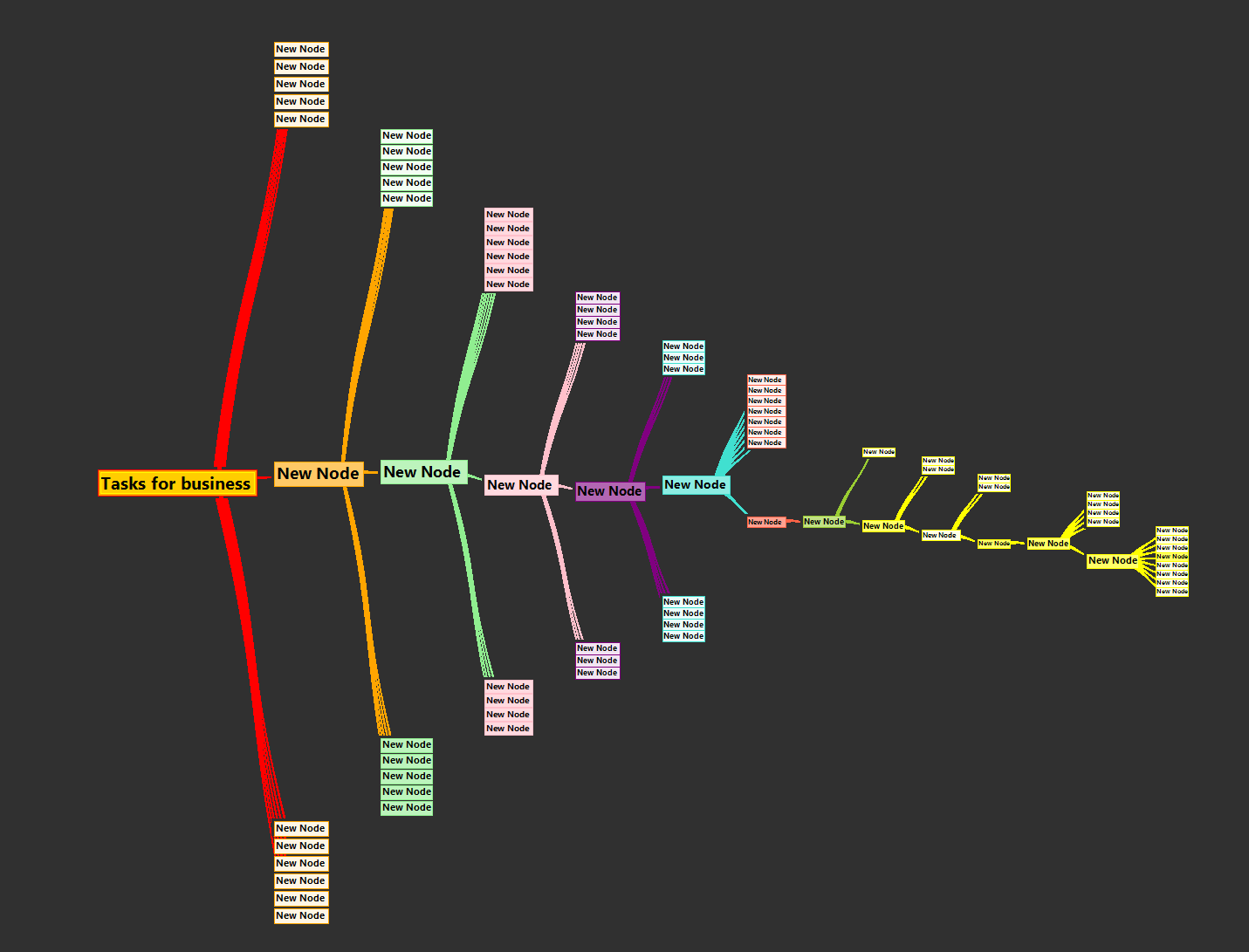Learning
KeyMindMap is based on principles of simplicity in use and functionality access.
At start-up the application displays a map of functions with key bindings.
The simplest way to learn mind mapping with KeyMindMap is to dive in and play with simple map layouts.
 Create a new MindMap
Create a new MindMap
Add Node by pressing Return key or using the button on toolbar.
Explore the key bindings and buttons to become familiar with creating mind maps.
6 Easy Steps to Make a Mind Map
- Enter the Main Topic. Start by entering the main subject in the center of the mind map, for instance “Capitals of the world”.
- Brainstorm Topics. Create main branches to enter your topics such as “London”, “Paris”, “New York” and “Beijing”. Do not worry about the order of the topics.
- Create Sub-Topics. Elaborate on your topics by creating sub-topics. Make sure to use very short phrases or even single words.
- Rearrange the Topics. If you need to rearrange the topics in your mind map, most software tools allow you to use keyboard shortcuts or drag-and-drop branches. This will enable you to structure the topics that you brainstormed.
- Add Images. According to the mind mapping theory, images improve memory retention.
- Notes and Research. Take notes to your topics and attached research files - if your mind mapping software allows you to.
Benefits when Creating Mind Maps with Software:
- It is faster to brainstorm and enter information.
- Re-arranging branches and formatting is much easier.
- You do not run out of “space”, as you tend to do with larger mind maps on paper.
- You can take unlimited notes and attach web links.
- Print your mind map - to pdf if desired. to Word, PowerPoint, Excel, Project etc. without re-entering information
Design
Design your own arrangements that help you memorise information

Child Pages
Title
A Mind Map is an easy way to brainstorm thoughts organically without worrying about order and structure. It allows you to visually structure your ideas to help with analysis and recall.